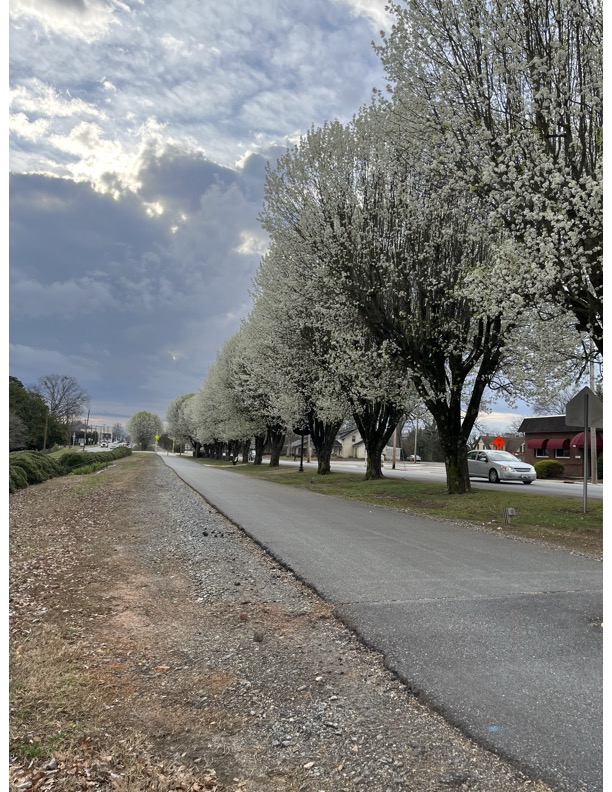Say NO to Bradford Pear Tyranny
go.ncsu.edu/readext?991873
en Español / em Português
El inglés es el idioma de control de esta página. En la medida en que haya algún conflicto entre la traducción al inglés y la traducción, el inglés prevalece.
Al hacer clic en el enlace de traducción se activa un servicio de traducción gratuito para convertir la página al español. Al igual que con cualquier traducción por Internet, la conversión no es sensible al contexto y puede que no traduzca el texto en su significado original. NC State Extension no garantiza la exactitud del texto traducido. Por favor, tenga en cuenta que algunas aplicaciones y/o servicios pueden no funcionar como se espera cuando se traducen.
Português
Inglês é o idioma de controle desta página. Na medida que haja algum conflito entre o texto original em Inglês e a tradução, o Inglês prevalece.
Ao clicar no link de tradução, um serviço gratuito de tradução será ativado para converter a página para o Português. Como em qualquer tradução pela internet, a conversão não é sensivel ao contexto e pode não ocorrer a tradução para o significado orginal. O serviço de Extensão da Carolina do Norte (NC State Extension) não garante a exatidão do texto traduzido. Por favor, observe que algumas funções ou serviços podem não funcionar como esperado após a tradução.
English
English is the controlling language of this page. To the extent there is any conflict between the English text and the translation, English controls.
Clicking on the translation link activates a free translation service to convert the page to Spanish. As with any Internet translation, the conversion is not context-sensitive and may not translate the text to its original meaning. NC State Extension does not guarantee the accuracy of the translated text. Please note that some applications and/or services may not function as expected when translated.
Collapse ▲
Main St. Spindale along the Thermal Belt Rail Trail, Bradford Pears as far as the eye can see!
Native to Asia, the Bradford pear, a cultivar of Callery pear (Pyrus calleryana), was introduced into the US in 1919 to be a tidy, thornless and sterile ornamental tree with a symmetrical shape and lush glossy foliage. Nurseries and homeowners loved them and planted them in the millions. They are up and down our Main St and on our school grounds.
The past 100 years has shown that the Bradford Pear cons far outweigh its pros. Not only does the Bradford pear have very weak branching angles that split off from the tree during storm events, the blossoms smell of fish and worst of all, it does indeed produce invasive offspring when other varieties of Callery Pear pollinate it. Many tractor owners tell me the thorns can burst a tire.
These offspring have spread all along NC roadsides and into our forests, out competing our native trees, such as dogwood, serviceberry, redbud and viburnum. There are zero caterpillars that feed on these invasive pears, so their very existence is creating a food desert for our spring birds who depend on caterpillars in the thousands to rear baby broods. While North Carolina doesn’t yet have a ban on Bradford pear, other states, like South Carolina and Ohio, have announced bans.
Ways you can identify these aggressors and distinguish them from our wild cherries: the pear descendants have incredible thorns, their spring flowers are in clustered balls and stink, their leaves are rounded with scalloped margins and the bark is light with ridges. The wild cherries will have longer serrated leaves, smooth and sometimes flakey darker bark, flowers that don’t stink, and no thorns. Now, today, is the easiest time of year to notice where the offspring are on your property, and you probably know if you have one of the original Bradford Pear parent trees causing the problem.
The best course of action is to remove and replace them with a caterpillar and pollinator- supporting NC native. Consider oak, redbud, dogwood, persimmon, fringe tree, hickory. In the smaller shrub category choose from Fothergilla, beautyberry, witchhazel, native deciduous azalea and more. You are spoilt for choice!
If all this news has not incentivized you to take these aggressors out, you can register now for Rutherford County’s Bradford Bounty! We hosted a successful event last October and are planning another this spring!
This is how it works: register at treebountync.com (pre-registration is required!), snap a photo of the pear tree alive, have the tree cut down (homeowner’s responsibility) and snap a photo of the fallen tree, bring photos to our swap event on Saturday April 6 in the parking lot of the N.C. Cooperative Extension office in Spindale to pick up your choice of available native trees. (Swap ratio of one to one, up to 5 trees.)
Please note that our spring event in April will happen at a different location: Our office at 193 Callahan Koon Rd in Spindale beside the Rutherford Co Senior Center
Pre-registering is key! TreeBountyNC




